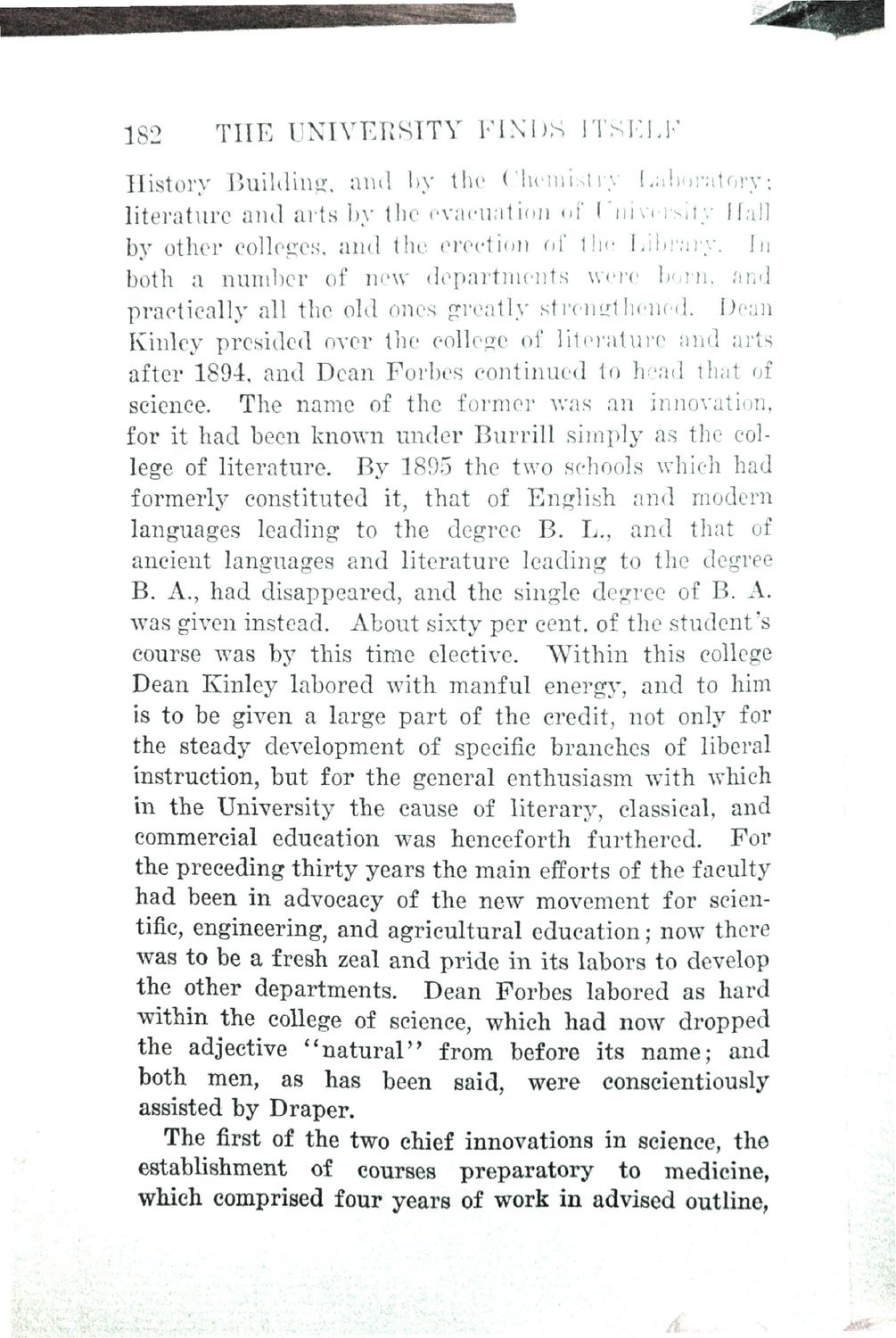| |
| |
Caption: Book - History of the University (Nevins)
This is a reduced-resolution page image for fast online browsing.

EXTRACTED TEXT FROM PAGE:
182 THE UNIVERSITY FINDS ITSELF History Building, and by the Chemistry Laboratory; literature and arts by the evacuation of University Hall by other colleges, and the erection of the Library. In both a number of new departments were born, and practically all the old ones greatly strengthened. Dean Kinley presided over the college of literature and arts after 1894, and Dean Forbes continued to head that of science. The name of the former was an innovation, for it had been known under Burrill simply as the college of literature. By 1895 the two schools which had formerly constituted it, that of English and modern languages leading to the degree B. L., and that of ancient languages and literature leading to the degree B. A., had disappeared, and the single degree of B. A. was given instead,^About sixty per cent, of the student's course was by this time elective. Within this college Dean Kinley labored with manful energy, and to him is to be given a large part of the credit, not only for the steady development of specific branches of liberal instruction, but for the general enthusiasm with which in the University the cause of literary, classical, and commercial education was henceforth furthered. For the preceding thirty years the main efforts of the faculty had been in advocacy of the new movement for scientific, engineering, and agricultural education; now there was to be a fresh zeal and pride in its labors to develop the other departments. Dean Forbes labored as hard within the college of science, which had now dropped the adjective "natural" from before its name; and both men, as has been said, were conscientiously assisted by Draper. The first of the two chief innovations in scienc^ the establishment of courses preparatory to^medjline, which comprised four years of work in advised outline,
| |